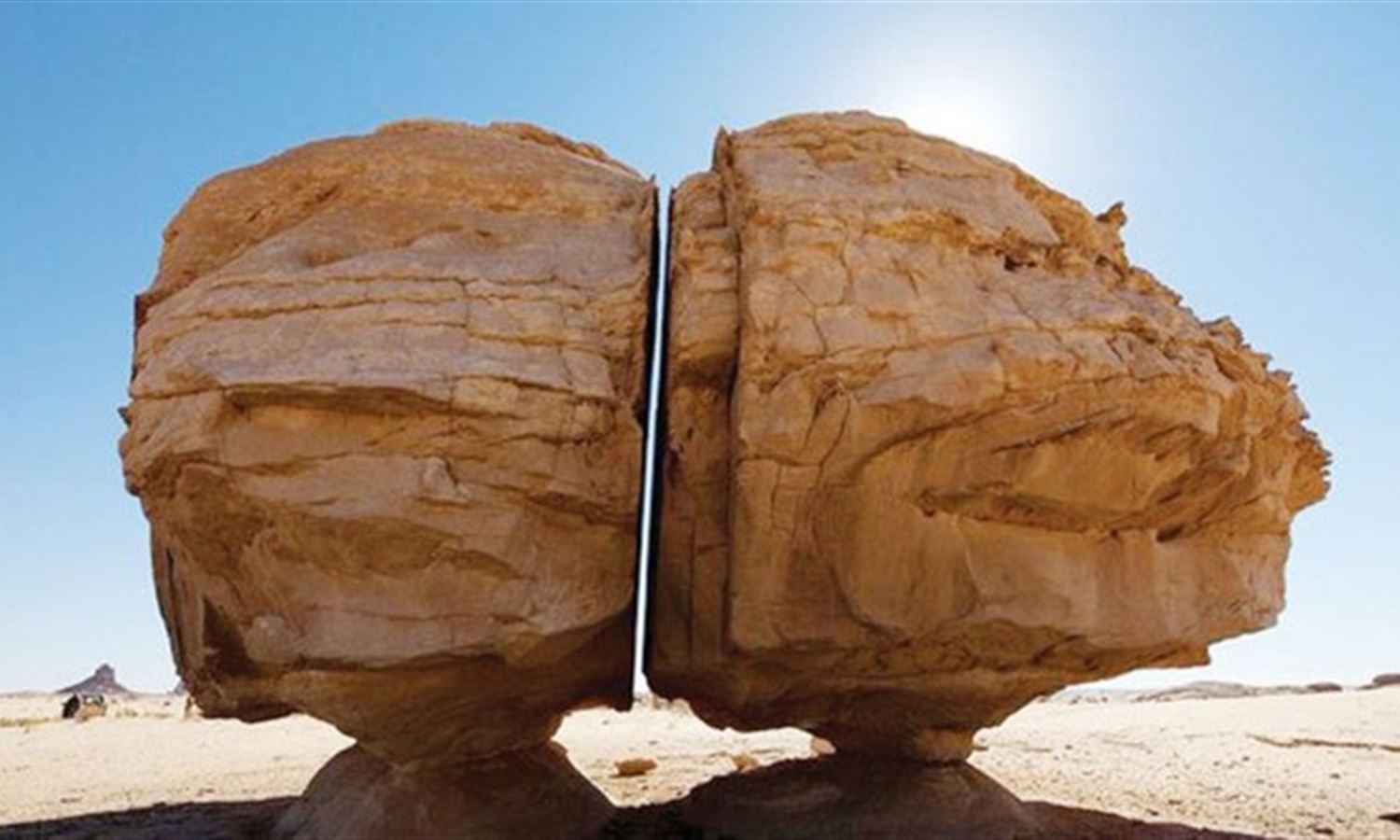Alongside the hills and mountains of Saudi Arabia are little-known archaeological treasures, such as Al-Naslah Rock in Tabuk and Camel Rock of Al-Wajh in the northwest — eye-catching “landmarks that document the land’s heritage,” according to one expert.
Eight-meter-long Al-Naslah Rock appears to have been sliced in half. Historians and geologists have been unable to identify the cause of the split, though centuries of erosion caused by sand and strong wind are believed to be responsible.
Speculation dates the splitting of the rock back to the time of the Thamud, an Arabian tribe that inhabited the region almost 2,800 years ago.
From left to right, the two rocks have completely and cleanly parted. Each side’s drawings are different and dissimilar, meaning it has existed in this split-up state long before man was able to draw upon it.
Inhabitants down through the ages have been aware of the importance of these rocks, using their surface to capture tales of their lives, beliefs and the living things they have encountered.
Source: Aseel Bashraheel
